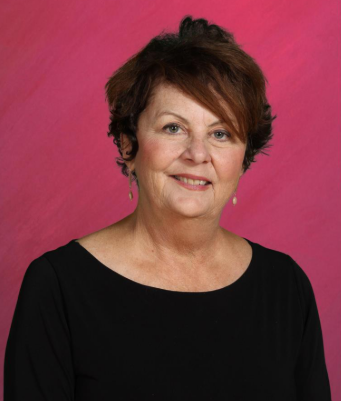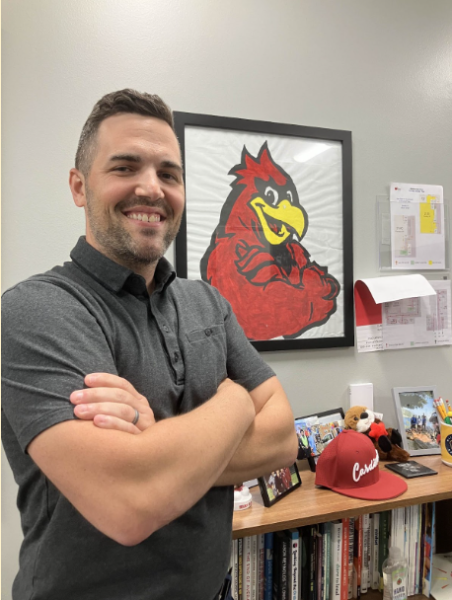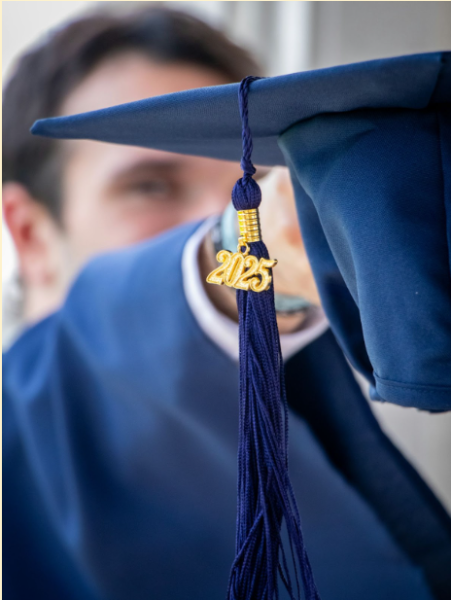Should We Be Celebrating Thanksgiving?
Thanksgiving. The name brings to mind warm, fuzzy memories of grandparents, cousins, aunts and uncles, all brought together for the first time in months. Thoughts of a table filled with the familiar and comforting Thanksgiving foods — turkey, stuffing, cranberry sauce, sweet potatoes and warm, fluffy rolls. A house ringing with laughter and smiles, the shouts of playing children, togetherness and warmth. Outside, a freshly fallen coat of snow blankets the land, and the air is still, quiet, peaceful.
The Thanksgiving we celebrate today is full of rich, beautiful traditions, but the commonly told story of the first Thanksgiving is a smoothed-over fairy tale that misrepresents much of what actually happened. The true history of America is not a story of brave, adventurous pioneers discovering a continent and paving the way for a beautiful new society to exist: it is a story of tragic genocide.
This brings to mind the question: should we be celebrating Thanksgiving? Or should we be mourning?
Dakota Osborn, a social studies teacher at Middleton High School and a member of the Menominee Nation, had some profound insight into the issue. Osborn’s grandmother was fully Menominee and grew up on the Menominee Reservation in northeastern Wisconsin. Life on the reservation was not easy.
“I think the story of my family on the reservation has had ups and downs; lots of [my relatives] have passed away pretty tragically,” Osborn said. “And life on the reservation, it can sometimes be difficult.” Osborn’s grandmother experienced abuse and harsh treatment because of her identity, including being beaten at her boarding school for using her native language. As a result, she left the reservation and integrated herself into the outside world. Osborn is one quarter Menominee and has many relatives still living on reservations.
The first step in understanding Thanksgiving is diving deep into the history of the first Thanksgiving. It turns out, there is more complexity to the story than most people imagine.
When the pilgrims arrived to the New World on the Mayflower in 1620, they took the land as their own and began to build their first colony. However, it was not their land to take. The land belonged to the local tribe of Native Americans, the Wampanoags. According to History.com, the Wampanoags had encountered English settlers before, but the previous encounters had led to slavery and the transmission of a rampant disease that wiped out two thirds of their population. The chief of the Wampanoag tribe, Ousamequin, was understandably cautious of the white settlers at first, fearing a repeat of past experiences. This caution led the Wampanoags to keep their distance over the first few months while the pilgrims built their settlement.
But the colonists were completely unprepared to survive the unexpectedly difficult winter, and many of them did not make it. When spring finally came, the remaining colonists were barely surviving. Fortunately for them, Ousamequin’s situation had changed. The Wampanoags were being challenged by a neighboring tribe, and their chief faced the threat of losing his land and endangering his people. Although there was disagreement among the Wampanoag people, the chief chose to form a treaty despite the risks, hoping to provide extra protection from the threatening tribe in case of an attack.
As part of the alliance, the Wampanoags taught the pilgrims how to successfully grow crops and gave them valuable insight into survival in the harsh climate, allowing them to obtain a bountiful harvest that fall. The pilgrims hosted a joyous feast, celebrating their harvest and likely feeling very relieved that they were so well-prepared for the coming winter.
Despite this, “the idea that Thanksgiving was a very peaceful, friendly, beautiful thing is definitely a myth,” according to Osborn.
The treaty lasted until the death of Ousamequin, but was quickly broken after that. The pilgrims were eager to expand their territory and indifferent to the rights of the Wampanoags and other Native American tribes. Sparked by the trial and execution of three Wampanoag natives by the pilgrims, a bloody war, now known as King Philip’s War, ensued.
The colonists murdered an entire tribe of Native Americans, the Narragansett tribe, including women, children and elders, out of the fear that they would side with the Wampanoag tribe to fight colonization. By the end of the war, both sides had lost one tenth of their soldiers and many Native Americans had been enslaved.
As time went on, more and more Native Americans had their homes ripped out from under them, and the area designated as theirs became smaller and smaller. Their culture, language and traditions were gradually crushed under the weight of the settlers’ dominance, and now American society rarely even considers the fact that Native Americans still exist.
But Native Americans are alive and active in American culture today, and it is important that their voices are heard by those wondering how best to celebrate Thanksgiving.
Osborn’s perspective on Thanksgiving is one of appreciation, not only for the heritage of native people, but also for the goodness of the traditions that have developed around Thanksgiving.
“Being a social studies teacher and being Native, I feel like Thanksgiving, at this present day, it’s used as a day to just be thankful, and to see family, and to have a nice meal,” Osborn said. “That’s amazing. And I think it should be celebrated. But it would be nice if people understood the history of America’s dealings with its native populations.”
Osborn also mentioned that his family living on the Menominee Reservation “loves Thanksgiving.”
Osborn explained that they think of it as “a day for celebration, being thankful, seeing family, [and] having a nice meal.” They have been able to distance themselves from the idea that Thanksgiving is a day to remember their history, because they understand that the current narrative is not an accurate one. They know about the false idea that the pilgrims had a beautiful friendship with the natives, but they also realize that Thanksgiving does not have to be about mourning what has already happened. It has the potential to be focused on forming new relationships and honoring their heritage moving forward.
Many Native Americans disagree with this, however, and Osborn recognized that.
“Native cultures between different tribes are very different,” he said. While Osborn may feel that Thanksgiving does not have to be about the past, some feel adamantly that it should be a Day of Mourning, as noted by Native Hope, an organization working to dismantle injustice against Native Americans. Native Hope sees Thanksgiving as “a day of mourning and protest since it commemorates the arrival of settlers in North America and the centuries of oppression and genocide that followed.”
Both views on Thanksgiving are valid and deserve respect. Whether one believes the holiday itself should be celebrated or not, it is important to remember the injustice in our history and honor Native American heritage and culture, not only on Thanksgiving but also throughout the year.
“I think what would be amazing, especially [with] November being Native Heritage Month, is if Native culture was celebrated,” Osborn said. “I think most of the time when people learn about Native communities and learn about Native Americans, it’s strictly through a historical lens, so they don’t understand that Native culture is still here, and that it can still be celebrated.
“I would love it if the broader public had an understanding of Native culture today, and of Thanksgiving. And I still enjoy Thanksgiving, and I think people should still enjoy Thanksgiving, but it’d be nice if it came with people’s understanding of Native culture today,” Osborn said.
Osborn also pointed out that while it is a great idea to set aside times like Thanksgiving or Native Heritage Month to learn about Native American culture, it is deeply important to be aware of these things throughout the rest of the year as well. One idea Osborn gave was attending a powwow, which is a festival that involves dancing, singing, feasting, and a gathering of the community.
“In Madison, every year, there’s a really large powwow that happens. It’s free to the public… Any powwow I have ever been to is super welcoming for anybody to come and learn,” he said. Another powwow he mentioned takes place every August in the Menominee Reservation in a natural stadium called the Woodland Bowl. To find other powwows nearby, check out this website.
The story of the colonization of America is one of horror, murder and injustice. Pretending this never happened is not only ignorant, but also hurtful to the Native people in our society today.
Americans have the opportunity, both this Thanksgiving and in the years to come, to bring healing and redemption to this country’s relationship with Native Americans, and it does not require significant money, time or effort. It simply requires a deep empathy and a desire to learn.
This Thanksgiving, remember the Native people who suffered at the hands of white colonists and the American government, and continue to remember them as the year goes on. And maybe this summer, consider attending a powwow or learning more about the reservations in your area — sometimes a little effort towards understanding our differences can have a bigger impact than you’d think.








